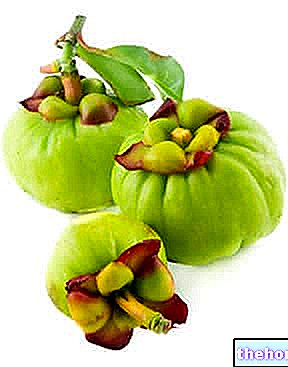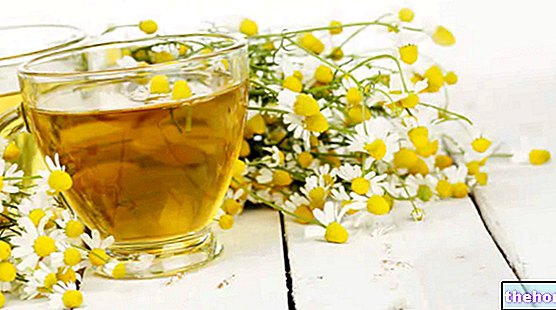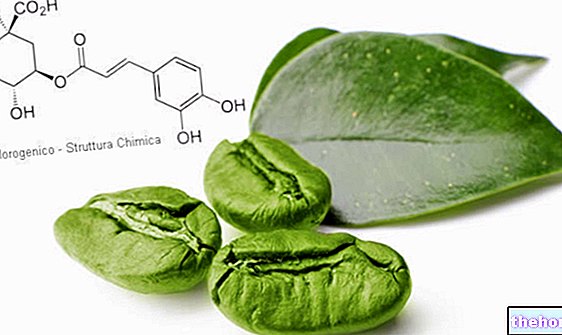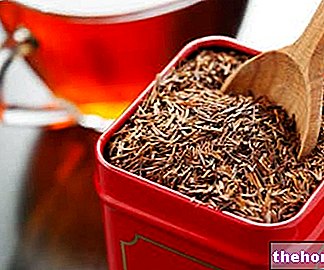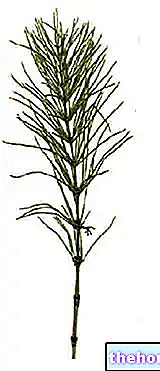The drink obtained from raw green coffee (Green Coffee - Café - Kaffee) is a real nerve characterized by the contribution of a stimulating molecule (in its various forms, both free and bound) called caffeine or, in chemistry, 1,3,7-trimethylxanthine - family of methylxanthines.
Raw green coffee cultivation
Raw green coffee is obtained by infusing the seeds (contained in the drupes), ground and not roasted Coffea (C. arabica L., C. robusta Linden, C. liberica Hiern etc.), a plant (or rather, a group of botanical varieties) belonging to the family of Rubiaceae.
The species of Coffea considered "most important" (for their respective organoleptic and gustatory characteristics), from which the best raw green coffee is obtained, is C. arabica L. (85% of production); this plant is native to southern Ethiopia and central Africa but is cultivated in Arabia, India, Central America, the Antilles and South America (it thrives best with temperatures between 15 and 25 ° C). There Coffea arabica it is also commonly used in the production of black coffee - roasted; also in this case its use qualitatively far exceeds the other varieties of Coffea, by virtue of the largest bouquet and taste delicacy, as well as for the minor bitterness.
Given and considered the type of infusion used in the preparation of the drink based on raw green coffee, during which lower temperatures (80 ° C) are reached than that used for traditional black coffee (100 ° C), the seed that is lends more to the production of the drink is the "richest" one, capable of conferring an important gustatory and olfactory "body" EVEN in the absence of roasting and with lower infusion temperatures. Raw green coffee is therefore a drink obtained by infusing the powder of the seed contained in the drupe of Rubiacea Coffea arabica; this fruit, developed from white flowers and with a balsamic aroma, is attached to the plant by means of red (ripe) clusters and with drupes similar to cherries. In section, the drupe of the coffea is structured as follows (starting from the outside): red epicarp, yellowish mesocarp, pulpy and bittersweet, and endocarp divided into two cells formed by a membrane that also divides the two seeds inside. After harvesting, the coffee beans must be separated from the pulpy component and the membrane; this process can take place dry by drying in the sun and beating, or wet in water through the use of pulping machines (whose action is followed in any case by a drying phase). The yield of the Coffea is 20% with 80% waste.
Raw green coffee fraud: Knowing its characteristics to avoid them
A good raw green coffee MUST be intact, obviously NOT marked by microbiological proliferation (induced by "excessive humidity in cultivation or storage) nor artificially altered. The grains of raw green coffee must appear uniform, equally colored, shiny, dry, consistency between cornea and cartilaginous, very difficult to crush with the teeth and WITHOUT ODOR OR "TASTE out of the ordinary". If intact and immersed in cold water, the seed must be able to color it mildly even after some time.
Obviously, to be sure of the integrity of raw green coffee (as well as more information about it) it is advisable to contact a laboratory able to provide the determination of humidity, ashes and caffeine, bringing to light any food sophistication ( to which roasted beans are generally much more subject than raw ones). On the other hand, raw green coffee can be compromised by bacterial fermentation and fungal contamination, as a result of which both the color and the smell will obviously be compromised. Furthermore, it is not uncommon for batches of raw green coffee imported by sea to undergo salt water washings, acquiring the name of "marinated coffee" (obviously salty and lye). It may also happen that some traders try to pass off a poor quality coffee (through pigmentation) for a more refined one, to the advantage of the selling price; it is therefore possible to discover the adulteration by immersing them in water or rubbing them on a cloth. , raw green coffee powder can be imitated with mixtures of flour and other ingredients, but this artifact is more easily recognizable.
Bibliography:
- New dictionary of commodity and applied chemistry - Villavecchia, Eigenman - Hoepli - pag 725: 731.

